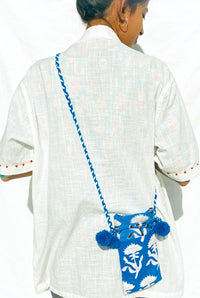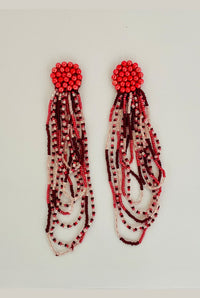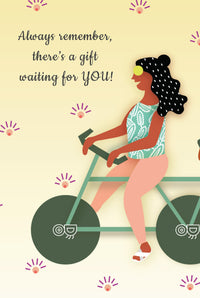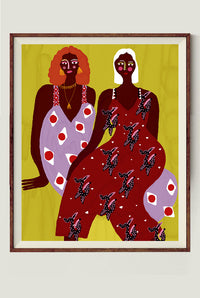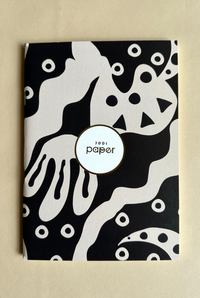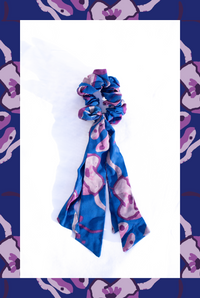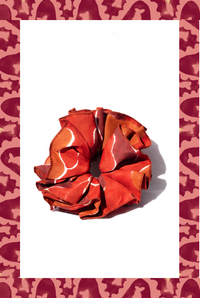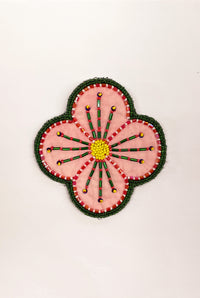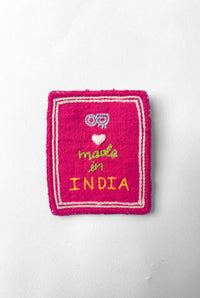DREAMERS AND THE CITY - Part 1
 In a testament to Bombay's allure and the diverse tales it holds, JODI has brought together an extraordinary cast of individuals for a photo series like no other as we celebrate the launch of our Kala Ghoda store in maximum city. These remarkable individuals make BOMBAY what it is, representing the fusion of those born and raised in the city and those who found their way here in pursuit of their dreams. Their stories are as unique as the threads that weave together JODI's clothing, forming a tapestry that captures the spirit of Bombay's dreamers.
In a testament to Bombay's allure and the diverse tales it holds, JODI has brought together an extraordinary cast of individuals for a photo series like no other as we celebrate the launch of our Kala Ghoda store in maximum city. These remarkable individuals make BOMBAY what it is, representing the fusion of those born and raised in the city and those who found their way here in pursuit of their dreams. Their stories are as unique as the threads that weave together JODI's clothing, forming a tapestry that captures the spirit of Bombay's dreamers.
On a beautiful morning, as the city awakens to another day of possibilities, JODI's lens takes us on a visual odyssey. This series pays homage to the essence of Bombay, celebrating its vibrant streets, its iconic landmarks, and most importantly, its people.
 Sameer Kulavoor
Sameer Kulavoor
A visual artist calling Mumbai, India home. Immersed in the whirlwind of 90s urban evolution triggered by economic shifts and the internet frenzy, Sameer observes and dissects the ripple effects of time, culture, politics, and socio-economics on our tangible and intangible world. His creations delve into the DNA of urban landscapes, questioning their essence through a blend of instinct and intellect.
 Sameer wears the Bari shirt.
Sameer wears the Bari shirt.
Presenting Sameer's odyssey in the city of dreams and its transformative influence on his being:
Bombay is where I was born and have lived most of my life. I grew up in the northern suburbs of Borivali; and am currently based in central Mumbai in the Parel/Dadar area. All my years in this city have been a witness to countless versions of change and ‘development’ in the city. In the early 90s, Borivali west was a largely agricultural landscape – we used to have to cross okra fields to get to our school. With economic liberalisation, residential projects took over those fields and now, that same path is a major link road and a metro station dwarfs the school building. Simultaneously, globalisation and the internet boom led to significant cultural and lifestyle changes - especially heightened when I ventured out of the suburbs and into college life in the DN Roads and B roads of South Bombay. With this independence, came exposure to multiple vantage points of this complex city.
Patterns begin to emerge once you spend enough time in one city and you begin to form an idea of the city as a sum of its parts. For example, what does the city look like from inside a crowded local train and what is the difference between a train that leaves at 12 noon from Borivali to Churchgate and one that leaves at 6 pm from Dadar to Goregaon? The city feels different on the Western Express Highway than the Eastern Freeway or the Bandra-Worli sea link. How does it feel to exit Malad station and walk past those M.M. Mithaiwalas vs. exiting from Dadar station and going past the Kabutar Khana towards Central Plaza. Or the walk from Marine Lines station to J.J. School of Arts via Princess Street and the St. Xavier's/Madam Cama back lane - very close to which Rangbhawan hosted iconic rock concerts back in the day, vs. attending a major festival with international headliners at the Mahalaxmi race course. Being part of a large CAA/NRC protest crowd at August Kranti maidan, vs. following a Ganpati Visarjan route on foot from Parel to Chowpatty via Lalbaug, Clare road, Khetwadi and Girgaon. You have Noor Mohammedi and Thakkers Bhojnalaya at short distances from each other – two completely different but equally glorious food worlds. Poojamalai gola at Borivali Chandawarkar lane is a different mood from a royal dry fruit falooda at Badshah Cold Drinks near Crawford Market. So is shopping at fashion street on a shoe-string budget from that of the high-street/Jio malls. From creaky, stiff seats with boisterous crowds at Excelsior and Diamond Cinema to the swanky luxe-experience with recliner seats with blankets and chef service at a 20 seater 4k Imax multiplex theatre. Not to forget the fair share of violence and bloodshed at our doors through the years - gang wars in the 80s, communal riots in the 90s, terrorist attacks in trains and towers – all experienced with a helplessness that is often passed off as the city’s resilient spirit. The city has never been as dug up for development in my lifetime, as it seems in 2023. But when has it not been a work in progress? There is no one, singular Bombay and you know closely the difference between each unique version of it. From which Bombay or Mumbai does one pick a favourite hidden spot or favourite food or identify parts or moments that have shaped their life and practice?
Meet Srila Chatterjee - A curator, a co-founder of iconic ventures like BlueFROG and BARO, and the visionary behind Baro Market. Her newest passion is 47-A, is a design gallery she has co-founded in the historic village of Khotachiwadi in Mumbai. She was the unstoppable force behind Highlight Films, the mastermind who nurtured talents and shaped careers in cinema, fashion, and production for 25 years. Now, she's conquering the intersection of art, design, craft, and fashion. Obsessed with dogs, great food, and exciting travels, Srila is a true powerhouse of creativity.
Hidden gems in Bombay that you would recommend exploring?
Khotachiwadi
If you could describe Mumbai in three words, what would they be?
I’m stealing this: it's A MAXIMUM CITY
Can you share an experience or incident in Bombay that had a significant impact on your artistic growth?
I was invited to be the Festival Director of the Kala Ghoda Arts Festival in 2004. I did that for 2 years, working with the most incredibly passionate, artistic and creative team - that believed in making something special happen to Bombay. What later transpired doesn’t matter, but the two years that we did it, elevated everything in the public space, reaffirmed my faith in people wanting things of quality and inspired me to deep dive much more into the cultural and artistic landscape around me.
 Srila wears the Margo dress.
Srila wears the Margo dress.
We would love to hear about your favourite travel experience?
Travel is one of my greatest passions and I think my favourite experience is always my last one!! But they vary so much that it's hard to have one favourite, so I’ll give you some experiences that I will never forget:
- a road trip through Nagaland and Meghalaya
- travelling through Mexico City and San Miguel de Allende
- a Harley trip to the North Sea Jazz Festival in Den Haag
- the Olympics in London
- journeying through Shantiniketan
- a textile trail in Kachchh
- journeying through Uzbekistan
- a history trip through Turkey
Your favourite building in the city and why?
The Museum (formerly called Prince of Wales). I love the architecture, the way it is set, the area it is in and everything it represents. I have started going there quite often for all kinds of shows and I love it every time.
How would you describe the role of traditional Indian handicrafts in the contemporary art world?
Currently, with little relevance and treated with little respect. But we are fighting hard to change that, and there are many like us. Slowly, I believe it will transform and play a central role : craftspeople will be recognized as artists, work will become far more imaginative, evolved and special and it will no longer be called ‘craft’ but will be treated like all contemporary art.
Muses: Sameer Kulavoor and Srila Chatterjee
Photographer: Sarang Gupta

